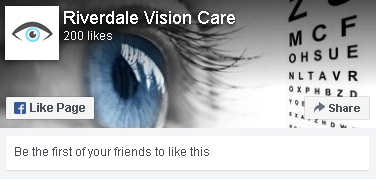Macular Degeneration (AMD)
Macular degeneration causes damage to the macula, a small spot near the center of the retina responsible for sharp, central vision. This loss of central vision can interfere with everyday activities, such as the ability to recognize faces, drive, read, or do activities such as cooking or fixing things around the house, or those that involve fine detail. There are two types of AMD – “wet” and “dry.”
Signs and symptoms
As AMD progresses, loss of central vision is a common symptom. Over time, the blurred area may grow larger or blank spots may appear. However, dry and wet AMD can each have different symptoms. Dry AMD symptoms include blurred vision, loss or blurriness of central vision, the need for increased lighting for near vision, colors appearing faded and less vivid, hazy vision, difficulty recognizing faces, and difficulty seeing when going from bright to low light.
Wet AMD symptoms include loss of central vision, dark or blank spots that appear, distorted vision (such as straight line appearing crooked), colors appearing faded or less vivid, and the size of objects appearing different for each eye.

Normal Vision

How Macular Degeneration Affects Vision

Risk factors for macular degeneration
Age is a major risk factor and is more likely to occur after age 60. Additional risk factors include smoking, high blood pressure, high cholesterol, obesity, family history of the disease and race
Treatment and prevention
Our eye doctor can often detect early signs of macular degeneration before symptoms occur. He/She can then discuss necessary steps to slow down your risk for progression. In cases of Wet Macular Degeneration, our eye doctor may recommend Anti-VEGF medication injections, Laser therapy, or Photodynamic therapy.

973-248-0060
92 Route 23 N Suite E
Riverdale, NJ 07457
Office Hours
Monday: 9:30am - 6:00pm
Tuesday: 9:30am - 6:00pm
Wednesday: 9:30am - 6:00pm
Thursday: 9:30am - 6:00pm
Friday: 9:00am - 4:00pm
Saturday: 9:00am - 3:00pm
Sunday: Closed
info@riverdalevisioncare.com

